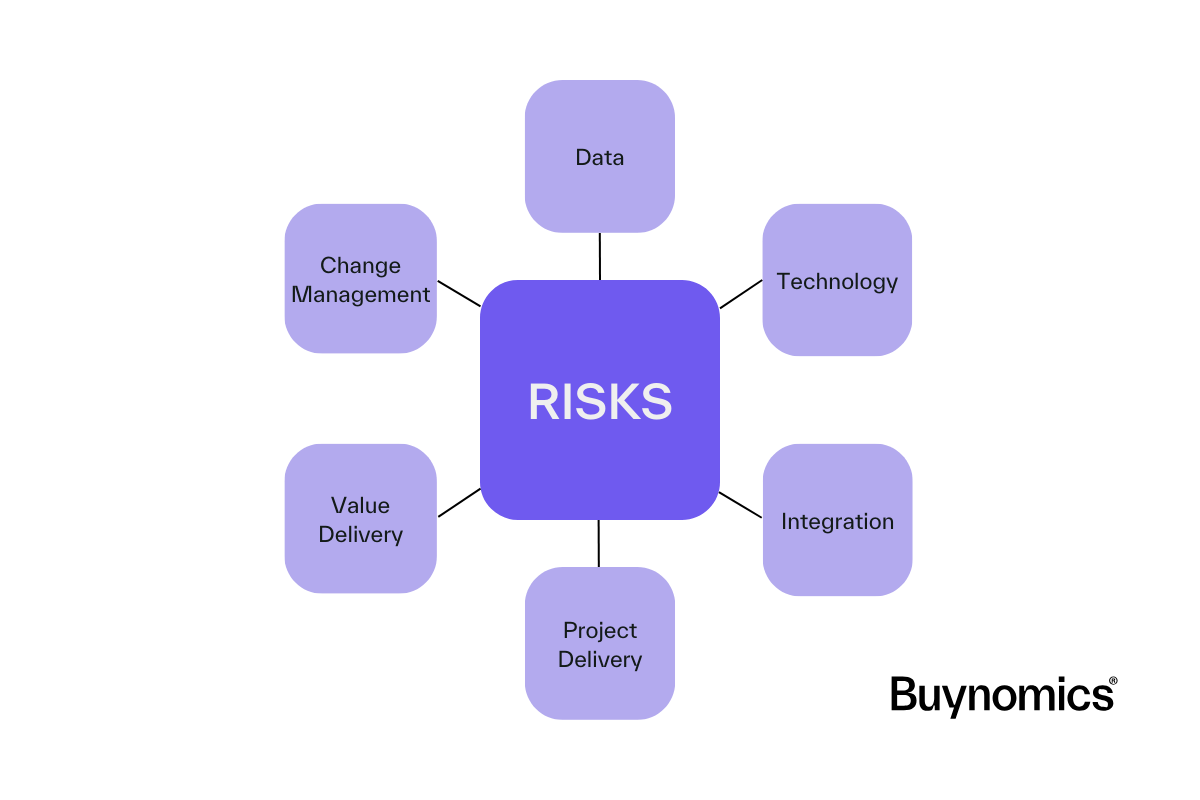RGM Maturity in the Age of AI
In recent years, the economy has been shaped by significant challenges, including a global pandemic, high inflation, and supply chain disruptions. But, as of September 2024, the U.S. Federal Reserve dropped interest rates by 0.5% —the first drop since the early days of the COVID pandemic and much more than analysts predicted [1]. This event marks the beginning of a shift into post-inflation economics.
For consumer packaged goods (CPG) brands, this shift means adjusting their Revenue Growth Management (RGM) levers as consumers are becoming more and more price-conscious and increasingly turning to cheaper alternatives and private labels or discounted products.
In our recent webinar, CIO, CTO, and Tech Business Growth Advisor Haja Deen (ex-pladis) discussed how RGM Managers can utilize AI capabilities in post-inflation economics.

The combination of this post-inflation economics, plus the rise of AI, means we have to think about solutions and transformation ahead of us quite differently from how we would have approached these before.
Haja Deen
CIO, CTO, Tech Business Growth AdvisorIn Revenue Growth Management (RGM), AI’s convergence with post-inflation economics offers an opportunity to drive transformation and accelerate a company’s journey toward RGM maturity. In this article, we will cover in detail how RGM Managers can achieve this transformation.
The RGM Maturity Journey: From Manual to AI-Powered
Today’s consumers have more choices than ever, creating a flood of data about their purchasing habits. As a result, traditional tools and methods are becoming less effective.
RGM transformation requires different departments within the organization to move from manual or gut-feeling-driven methods to AI-powered tools for improved, data-driven decisions. We can visualize this transition as a journey from "left" (manual) to "right" (AI-powered) see image 1.
.png?width=1200&height=800&name=Value%20(2).png)
Image 1: RGM tooling based on maturity
Do you know where your organization currently stands on the path to RGM maturity? Take our RGM Maturity Assessment to see where you are today and discover actionable steps to move up the maturity curve.
In the webinar "Seven Game-Changing Strategies for Introducing AI into RGM," Haja Deen presented his LEADERS Transformation Framework. It outlines seven essential steps that help you introduce AI-powered tooling to your organization, with an aim to compete in the post-inflation economy and capture the changes in consumer preferences.
Each step is designed to help RGM teams align with AI, drive meaningful, sustainable outcomes, and eventually reach a triple win.
LEADERS Transformation Framework
There are seven key elements to consider and master for an effective transformation within your organization. We’ll explore each in detail, providing the insights needed to successfully navigate and execute transformative initiatives.
.png?width=400&height=600&name=L%20E%20A%20D%20E%20R%20S%20(1).png)
Step 1: Lead with a Strong Business Case
As an RGM Manager, your first step toward AI-powered maturity is to build a business case that addresses the key pain points of your organization. Identify these pain points and demonstrate how they can be resolved—not with additional tools that fail to tackle the core issue but with solutions that address the root concerns.
"A mistake I’ve seen many times is people building business cases full of 'vitamins,' promising various benefits, but not addressing the 'painkillers.' Painkillers sell better with leadership teams, and the vitamins can come later." — Haja Deen.
Step 2: Equip Your Organization
Once the business case is clear, the next step is to ensure that team members involved in implementing or using the new AI-powered tool have a shared understanding of how these tools can enhance the RGM organization’s effectiveness.
Since not everyone has the same level of understanding of AI, educating the team about how AI tools work is crucial. Your top priority before starting any AI-powered transformation should be establishing a common vocabulary and mindset around AI tools. Educate your organization on how AI works and the results it will produce. This will make a significant difference in your project's success and its long-term impact.
Step 3: Align Stakeholders for Success
When leading an AI-powered transformation as an RGM leader, you must recognize that you are building this for your stakeholders, including the marketing, sales, and finance departments. These groups provide inputs and rely on outputs, often through tools like spreadsheets or dashboards, which are tied to key business processes like five-year strategic planning, annual budgets, and other regular business reviews.
When implementing an AI-powered RGM tool, manage your stakeholders in stages. Identify whose input is valuable at each stage to produce the expected outcome and include them only when necessary for the project to be adopted and scaled across the organization.
Each transformation has its own "sweet spot" for stakeholder engagement.
Step 4: Drive Early Wins
Value does not always come from the top-to-bottom growth. Metrics like efficiency gains or user satisfaction indicate the immediate source of value that you want to show as an early win. Then, as you finish implementing the AI-powered RGM tool, you will drive dollar sign value into the business.
While transforming your RGM function, decision-making remains a daily task. AI-powered RGM tools enable organizations to quickly move from descriptive analytics to predictive and prescriptive insights, leading to early successes. However, AI solutions mature over time, so it's essential for teams to rigorously test and back-test the system's predictions initially to ensure the AI consistently makes better decisions than humans, building confidence in its effectiveness.
Communicate with your teams to find “early wins” and streamline them to the broader organization.
Step 5: Evaluate and Reduce Risk
Every transformation comes with risks, but there is a pattern to the risks. If you do any transformation project, you will face data risks, technology risks, integration risks, delivery risks, and—once the tool is ready to use—you face change management risks. But, you can mitigate some of these risks before the project starts.

Today, you can buy top-notch technology and focus on applying it to your business. In the case of AI-powered tools, you need to train them well, and then they will learn from the data and become tailored specifically to your business. That is the knowledge you cannot get from spreadsheet modeling and regression analysis.
Address and mitigate the risks, but don’t forget to always focus on the value delivery when communicating with the C level. C-level leadership is not interested in what technology and algorithm you are using—they are interested in whether the transformation project is driving value to the top and bottom line.
Step 6: Refine for Maximum Impact
Throughout this transformation, do not forget what drives value for the business and make sure that every iteration of AI introduction is driving that value. In RGM, you drive the value by influencing the key levers—Pricing, Promotions, Price Pack Architecture, and Distribution.
You will add value to your organization by driving revenue, market share, and profit margins if you can predict shopper behavior with the help of AI-powered RGM tools on these levers. And you want to do that faster and better than your competitors. This value creation will ensure you reach your objectives at the end of the year.
Step 7: Sustain Ongoing Value
When you introduce and launch a new AI-powered tool, you must stay focused and make sure the teams are adopting the tool. Stay focused on the value that the technology is driving to the organization. It is always a work in progress.
The AI-powered RGM tools implemented today will need adjustments or upgrades in the future, and business needs will change. As a result, RGM teams must remain agile and open to feedback to deliver value over time.
These seven strategies are like a puzzle. Each represents an important part of the full picture. Only by implementing all seven steps will you create and bring value to your organization.
Embracing the Future of RGM with Confidence
The intersection of advanced technology and economic shifts offers opportunities for growth and innovation in Revenue Growth Management (RGM). The decision to lead organizations through a transformation from descriptive analysis to AI-powered prescriptive RGM actions will give RGM leaders the advantage over their competitors and the insights needed to gain market share and reach their full revenue potential.
Leveraging AI technology, like Buynomics’ Virtual Shoppers AI, organizations can better predict consumer behavior and navigate the challenges of a post-inflation economy to achieve RGM maturity—resulting in profit and revenue increases.
Take the Next Step
As a forward-looking RGM leader, become a driving force in your organization’s AI transformation and drive revenue with Buynomics.
To start, fill out our RGM maturity assessment and receive a personalized report in minutes. The report will benchmark your performance in key categories and provide you with best practices and actionable next steps!
Discover how Buynomics can help you maximize RGM levers and lead your organization’s success by booking a demo today.
Resources
[1] https://www.cnbc.com/2024/09/18/fed-cuts-rates-september-2024-.html

October 29, 2024

